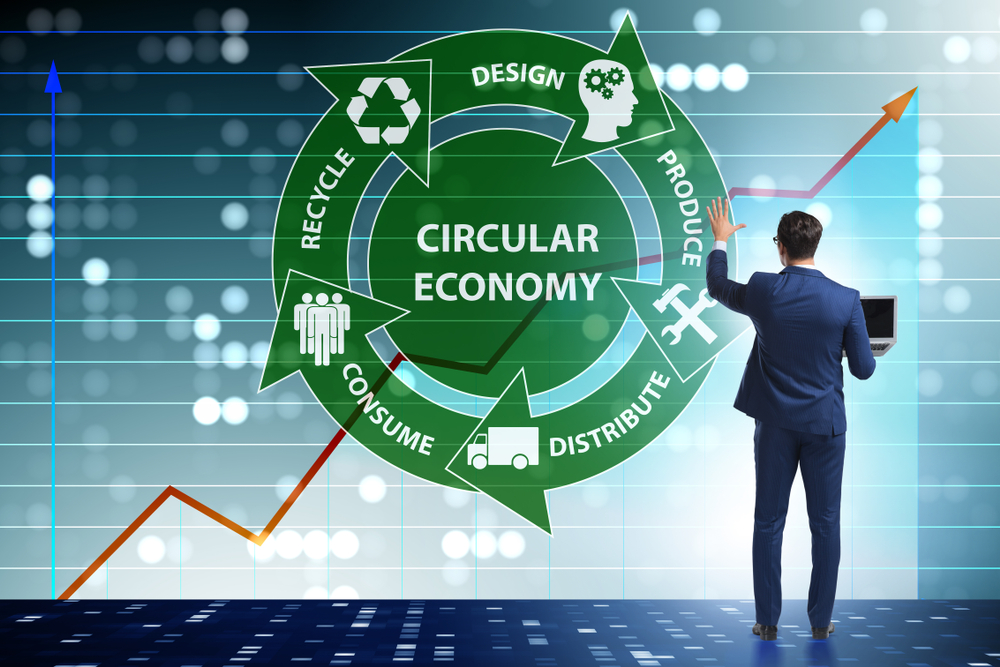What is a Circular Economy?
A circular economy involves keeping resources in use as long as possible and gaining the maximum value out of resources whilst they are in use. When a product reaches the end of its life then the maximum value from resources that form the product is gained. This could be achieved in numerous ways such as recycling or reuse. Such recovered resources can be used to make new products that may or may not be the same as the original product, as we can see from this simple overview of a circular economy approach:

I guess a circular economy is pretty much the same as how the natural world works. For example in most courses that I deliver, I cover the cycling of nutrients: commonly carbon, nitrogen, and phosphorous. Take an example from the carbon cycle, in autumn when tree leaves fall to the ground, they are not wasted by nature they are decomposed by micro organisms adding carbon and other elements to the soil. Certain types of bacteria while breaking down the leaves will emit carbon dioxide. The carbon dioxide is then consumed by trees via photosynthesis and helps to make more leaves (and other parts of the tree!). This is what we are trying to achieve with a circular economy – in essence nothing is wasted, it is a perpetual loop. This short film sums it up well.
What is a Linear Economy?
To understand a circular economy, it is important to get to grips with the polar opposite – a linear economy. A linear economy is where resources are extracted for a product; the product is manufactured and then consumed. By contrast; when the product reaches the end of its life it enters the final phase where it is disposed of, possibly to a landfill site where all the resources that make the product are lost forever and more needs to be extracted from nature. An overview of a linear economy is provided in the figure below:

Benefits of a Circular Economy
Obviously, there is a big push in many countries to move towards a more circular economy. I am sure that you have worked out a few of the reasons why this might be the case, but it could include the following:
- Reduction in Pollution – none or a small amount of resources are taken from nature, as waste materials are recovered and become raw materials for another product, then there is reduction in associated waste and pollution. Essentially the extraction phase of the linear economy is being made redundant. Pollution is also eliminated from the disposal phase, for example from land filling a redundant product and may be reduced at other points along the life cycle.
- Competitive Advantage – if waste can be eliminated or at least reduced then this will lead to savings. Wastage has a significant financial cost both to individual organisations and a countries economy overall.
- Resource Usage – the maximum value from a resource is gained while in use and resources are recovered or regenerated when they reach the end of their life. A truly circular economy involves none or at least very little wastage.
- Resource Scarcity – certain resources are becoming rare and there is a real need to conserve them. Operating a circular economy means that such resources are constantly reused and none or at least very little is disposed of and lost forever.
Take a look at these case studies to see how circular economy has been applied.
Summary
It is important that organisations move towards a more circular approach, where no resources are lost from the economy, rather than the more traditional way of operating where resources are used and then lost – the linear economy. Not only does this have substantial benefits for the environment but it is highly beneficial to an organisations bottom line.
–
John Binns BSc (Hons), MSc, MSc, MIEMA

With over 19 years’ experience working in environment management, John Binns BSc (Hons) MSc MIEMA is an experienced environmental tutor and consultant with knowledge of health and safety management.

[…] https://blog.rrc.co.uk/2019/11/08/circular-economy/ … […]